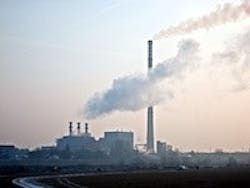Treatment Chemical Market for Gas Turbine, Combined Cycle Power Plants to Reach $700 Million
In 2014, the total market for water and wastewater treatment chemicals will exceed $25 billion, according to a study from the McIlvaine Co. Of this total, $4.9 billion will be spent by the power industry. The biggest segment will be coal-fired power. The nuclear segment will also be significant. The gas-fired segment will be close in size to nuclear.
More than $700 million will be spent for treatment chemicals in gas turbine and combined cycle power plants. This includes the generators in the large utility plants, but also those used in oil and gas extraction and processing, refining and by other industrial operators. These forecasts segmented by region and then by 80 countries and sub regions are displayed and updated continually in “Water and Wastewater Treatment Chemicals: World Market,” published by the McIlvaine Co.
Seventy-five thousand MW of new utility electrical generating turbines will be added this year to a world base of 1.1 million MW already installed. In addition, a large number of smaller turbines will be purchased by industrial plants, which are generating electricity and steam or are compressing gases and use gas turbines to provide the compression power.
Many gas turbines are operated in conjunction with a steam turbine in the combined cycle mode. Treatment chemicals are used to purify the water, which will be used to make steam, prevent corrosion and scaling in the steam cycle and treat the raw water which will be used for cooling. The blowdown from the cooling cycle must also be treated.
Some turbines are operated in the simple cycle mode, so no water is necessary for cooling. However, even these units require fogging or inlet air cooling systems using deionized water. Hence, water treatment is necessary. For combined cycle operation dry cooling is becoming more popular. However, the vast majority of systems use wet cooling towers. Companies such as Nalco and GE have automated chemistry systems to measure the parameters and add chemicals to maximize the number of times the water can be recycled.
The cooling water blowdown requires treatment chemicals. Zero liquid discharge systems are becoming popular. These require various filtration and evaporation steps all with water treatment chemical requirements.
For more information on Water and Wastewater Treatment Chemicals: World Market, click here.
Source: McIlvaine Co.
